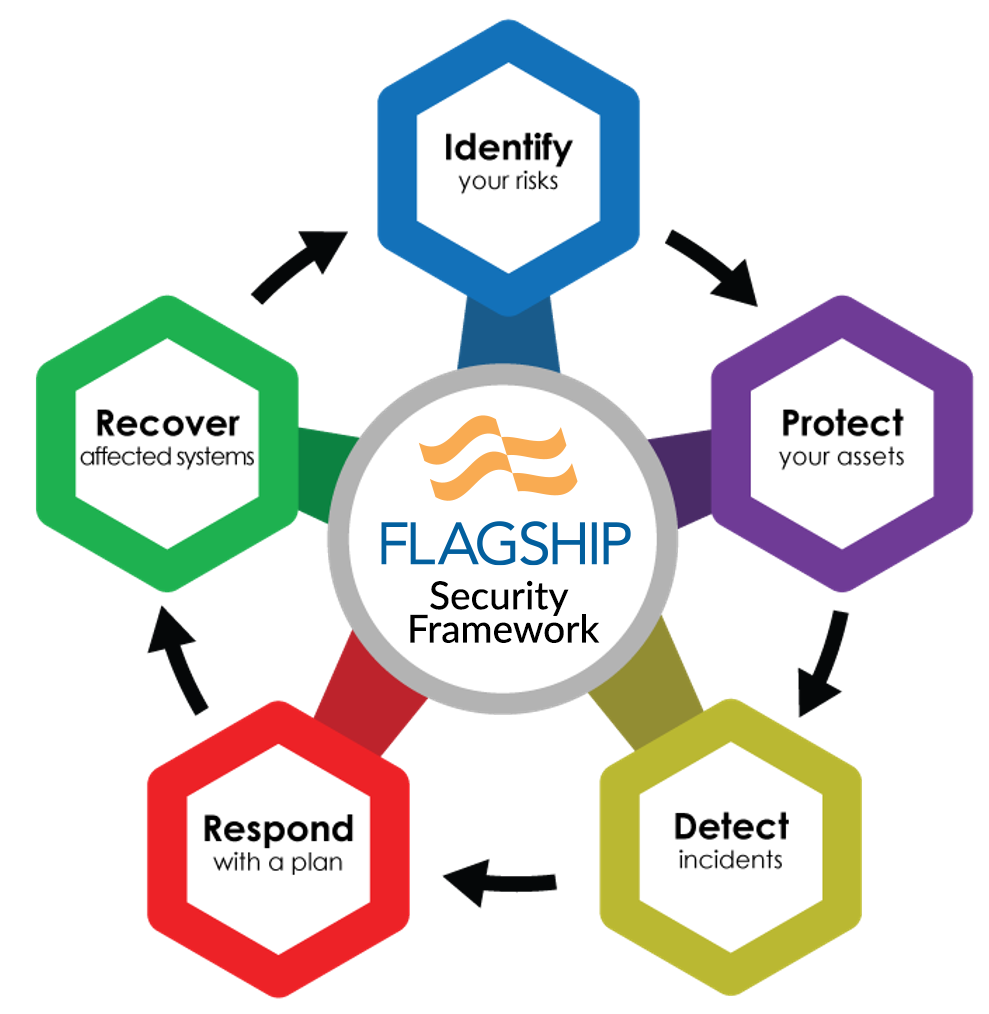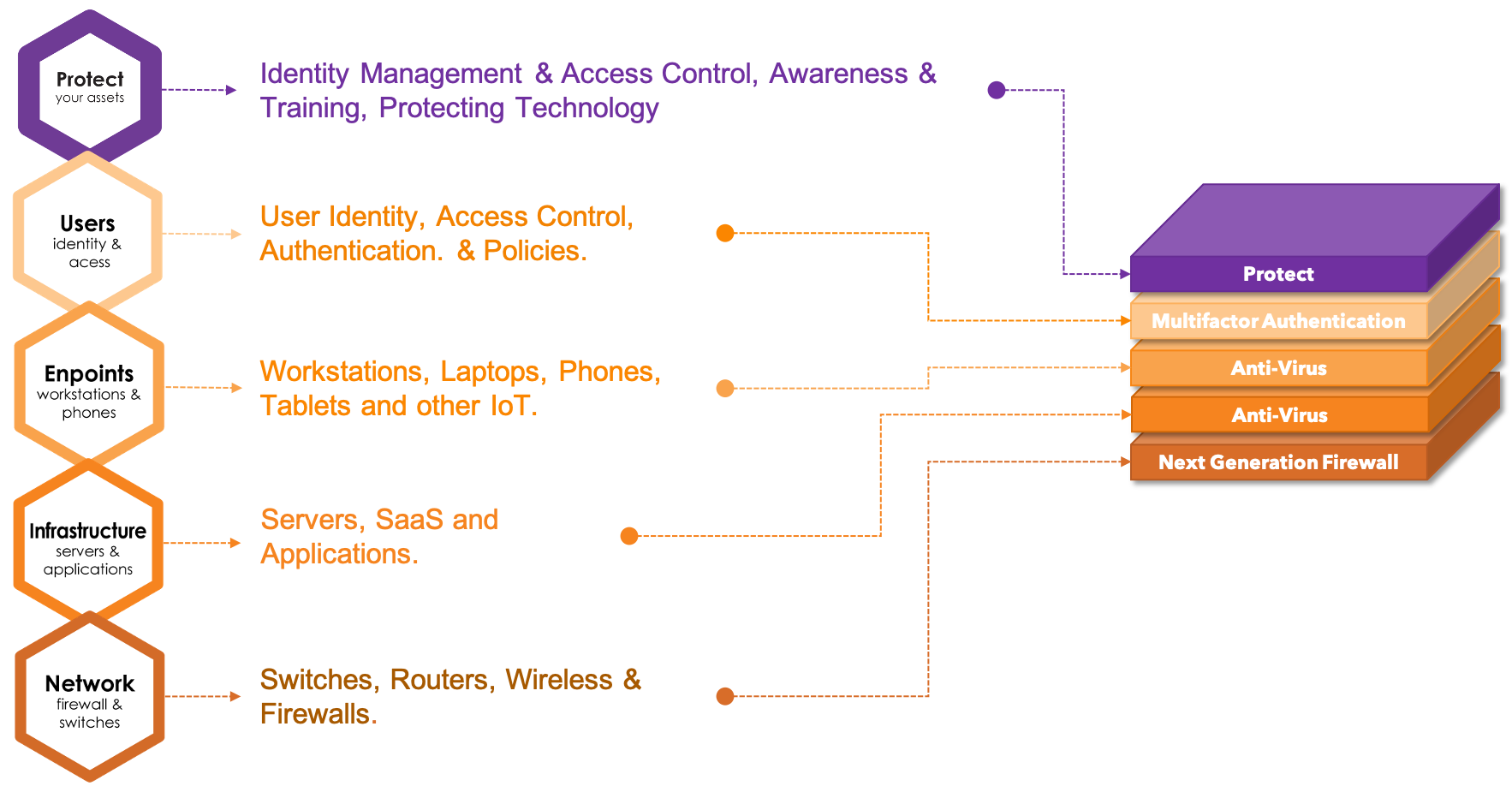Agile, Secure & Responsive IT Environments
Menu
Menu

Each function is essential to good security posture and successful management of cybersecurity risk. This is a lifecycle, or process, that never ends. It is very important for a security process to constantly develop, self-evaluate, and adjust because attackers are constantly evolving their tactics as well.
The SecOps Framework is built off the National Institute of Standards and Technologies (NIST) Cyber Security Framework. The NIST CSF framework was originally designed for critical infrastructure, but being very versatile, it can be used in organizations of all sizes. The framework is outcome-driven, though it does not define how the outcomes must be achieved. This allows both large and small cybersecurity budgets to achieve their end goals in a way that is feasible for them.
We further define our framework by defining four tracks within an organization's information technology system. The five core functions of the framework can be applied to each track to assist in finding weaknesses within the functions.
The four tracks are:


The Protect function calls for Identity Management, Access Control, Awareness & Training and Protecting Technologies.
For a deeper dive into the framework, download our Flagship Security Framework white paper.
